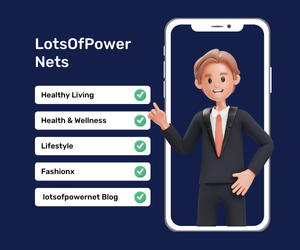Key Takeaways
- Children’s feet grow rapidly, especially in the first five years, requiring frequent size checks.
- Well-fitting shoes support posture, balance, and overall healthy development.
- Ignoring growth spurts or subtle fit issues can lead to discomfort and long-term foot problems.
- Regular at-home measurements and professional fittings help ensure shoes remain supportive.
- Proactive shoe replacement keeps kids comfortable, active, and confident in daily activities.
Understanding Children’s Foot Growth
Children’s feet are constantly changing, so parents and caregivers must carefully monitor their growth and ensure their shoes fit correctly at all times. During early childhood, feet are especially quick to develop, which means shoe sizes can shift rapidly and unexpectedly. It is not unusual for a young child’s shoe size to change several times within a year. It’s important to recognize the unique growth patterns that occur throughout different developmental stages to find the perfect fit for your child. Children’s footwear that fits well supports more than just comfort—it’s key for proper posture, balance, and healthy movement as they reach crucial milestones in their physical development.
It’s not uncommon for parents to be caught off guard by sudden growth spurts, which can seemingly happen overnight. The pace of foot growth typically slows as kids approach school age, but regular checking is necessary for catching those abrupt size changes before they result in too-tight shoes. Ignoring the subtle signs of shoes becoming too snug leads to discomfort and complaints and can contribute to or aggravate longer-term foot health issues. Proactively adjusting shoe size according to need helps children move easily and confidently, whether running at recess, joining in sports, or simply exploring new spaces.
Age-Based Shoe Replacement Guidelines
- Infants (0-12 months): Feet may grow to half a size every two months. Check shoe fit frequently and never force shoes on a child.
- Toddlers (1-3 years): Expect a half-size increase every two to three months, as this is often a phase of rapid change with new walking and running skills developing quickly.
- Preschoolers (3-5 years): Growth slows but remains steady, usually a half-size every four months. Children in this group are often very active, so their shoes wear out faster, making checks doubly important.
- School-aged children (6-12 years):Feet grow more gradually, about a half-size every six months, but routine checks and fittings remain important, especially during back-to-school season or after a noticeable physical growth spurt.
Every child grows at their own pace; some may require more frequent shoe replacements than others, depending on activity levels, genetics, and health. Mark your calendar for regular fittings, preferably at the start and midpoint of each season, to avoid uncomfortable shoes and ensure continuous support for developing feet during all kinds of play and learning.
Signs It’s Time for New Shoes
Besides following the age-based guidelines, it’s essential to pay close attention to the warning signs that your child’s footwear needs updating—these cues often appear before the next scheduled shoe fitting:
- Complaints about foot pain, tightness, or “pinching,” especially after being active or at the end of the day.
- Red marks, blisters, or calluses that develop soon after wearing shoes can indicate friction from a poor fit.
- Struggling to put on or remove shoes, especially if this is a new behavior or a child prefers to avoid certain shoes.
- Visible wear, such as thinning soles, holes, fraying, or toe bulges pushing through the front, all affect protection and comfort.
Addressing these clues promptly and replacing shoes as needed can help prevent lasting foot problems, including postural imbalances, arch pain, and more serious deformities that might require medical correction later.
Tips for Measuring Your Child’s Feet
Home Measuring Steps
- Please have your child stand on a blank sheet of paper placed on a hard, flat floor to ensure their foot spreads fully under their weight.
- Trace both feet’ outline, ensuring your child stands naturally and doesn’t curl their toes. A family member can help keep your child still for accuracy.
- Measure the distance from the center of the heel to the tip of the longest toe on each outline, using a ruler or measuring tape for precision.
- Use the longest measurement to determine the needed shoe size, as feet are rarely identical in size—always size for the larger foot to avoid discomfort.
Always fit new shoes to the larger foot, and ensure enough space for movement, growth, and socks. Ill-fitting shoes, whether too small or overly large, can cause problems such as tripping, blisters, and poor walking habits. Some parents use a thumb’s width as a tried-and-true method for checking the room at the toe box.
Choosing the Right Shoes
- Check for about half an inch (a thumb’s width) between the longest toe and the shoe’s end, allowing immediate comfort and growth throughout the season.
- Look for shoes with flexible, supportive soles and adequate arch cushioning to promote healthy movement and shock absorption.
- Opt for breathable materials to reduce sweating and minimize the risk of fungal infections, especially for children who are active or prone to sweaty feet.
- Avoid used or hand-me-down shoes, which may have compressed padding or be worn into particular shapes that don’t suit your child’s specific foot needs.
Supporting proper foot development in your child not only avoids short-term discomfort and blisters but also reduces the risk of long-term foot issues such as flat feet, bunions, and poor posture.
Regular Check-Ups with Professionals
While at-home checks are beneficial, periodic evaluations from a shoe-fitting expert or pediatric podiatrist can detect subtle issues you might overlook. Many reputable shoe stores provide professional fittings as a complimentary service, helping you find the best support as your child’s feet evolve. Experienced fitters and medical professionals can also point out signs such as uneven wear, irregular gait, or persistent pressure points, which may signal the need for corrective footwear or further assessment. These check-ups are especially wise if you notice persistent discomfort, abnormal posture, limping, or developmental concerns that do not resolve with simple shoe changes.
Impact of Ill-Fitting Shoes
Too-small shoes can present risks beyond minor blisters; chronic pressure and crowding can lead to bunions, ingrown toenails, inflammation, and potentially lasting changes in toe and bone alignment. Too loose shoes may not secure the foot properly, leading to instability, tripping, falls, and muscle fatigue from working to keep the shoes on. Over time, these avoidable problems can interfere with physical activities and cause chronic foot pain, which may even carry into adolescence or adulthood if not corrected early. Early prevention and smart shoe choices give your child the best chance at healthy, pain-free feet for life.
Final Thoughts
Attentiveness to your child’s changing shoe size plays a pivotal role in their comfort, performance, and lifelong foot health. By measuring regularly, watching for early warning signs of poor fit, and consulting professionals when needed, you ensure every step in your child’s growth is healthy and confident. Staying proactive with shoe fittings and upgrades keeps your child’s feet happy, healthy, and ready for life’s new adventures and milestones.





